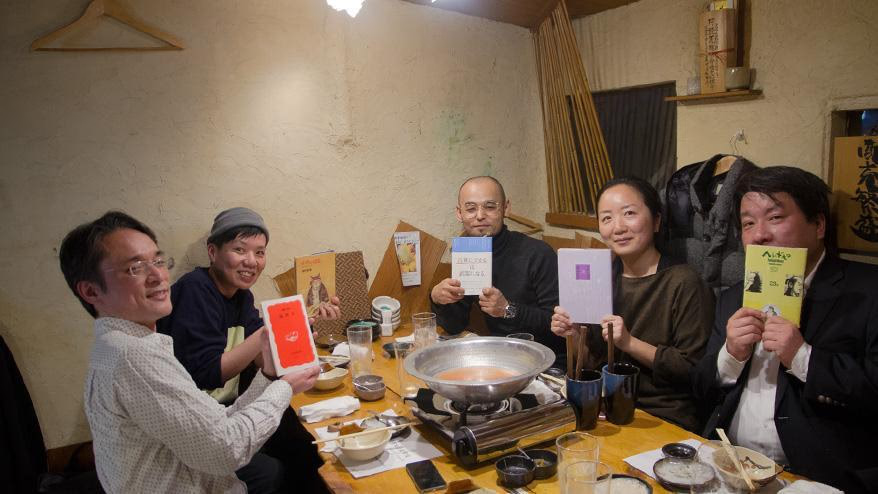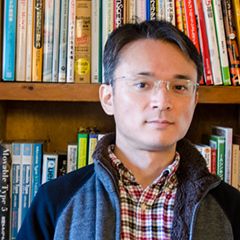The reading group was held as a Monosus New Year's party. Today is the second part. The theme was "Books to read in the new year."
In the first part , participants were introduced to books that would encourage them to read, speak aloud, and create words, and also shared their goals for the year.
The second part of the series will feature one poetry collection and two manga. It doesn't seem like aspirational, but what kind of thoughts will be expressed?
Now let's start the second half!
Presentation Time
Part 2
- Eating clams is such a quietly scary thing Words born from ordinary daily life Ishigaki Rin (author) "Nameplates and other things - Ishigaki Rin Poetry Collection" (reviewed by Yoko Omura)
- Heugeru = to fool around. A warlord of the Sengoku period, torn between the desire for success and material desires. "Hyougemono" by Yoshihiro Yamada (reviewed by Masayuki Kamii)
- The monotonous repetition of everyday life and the momentary destruction of life. Suzu-chan's everyday life, living a strong and gentle life. "In This Corner of the World" by Fumiyo Kono (author) (recommended by Yoshiko Nakaniwa)
Eating clams is a secretly scary thing Words born from ordinary everyday life
Nameplates and Other Things - Poetry Collection by Ishigaki Rin (introduced by Yoko Omura)

Rin Ishigaki (author) Nameplates and other things - Rin Ishigaki poetry collection, Dowaya (April 2000) ( Amazon )
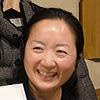 Ohmura
OhmuraI would like to introduce you to a collection of poems by Ishigaki Rin called "Nameplates and Such." I first encountered her poems in an elementary school textbook, and was so moved by the poem "Shijimi" that I have never been able to forget the name "Ishigaki Rin."
-- Reciting the poem "Shijimi" for a while -- (A poem about how, late at night, a clam that has been soaked in water to remove sand makes the "Oni Baba laugh.")
Thinking back now, I was able to buy things from the supermarket and live normally, but I never had any sense of taking the life of a clam, for example. But this person was conscious of the fact that he was taking a life, and I think I was surprised by the world of the poem.
Last year, when I spent half a year in Kamiyama, I had many opportunities to feel that food gives life. For example, I had to skin a wild boar. I had time to face life. When I moved from my hometown of Hiroshima to Tokyo, I remembered this poem and decided to take this book with me.
*Omura, who was a student of the second batch of the Kamiyama Monosas School, spent six months in Kamiyama Town, Tokushima Prefecture from July 2016. He started working at the Monosas Yoyogi office this year.- Rin Ishigaki is a woman with a very gentle impression, and she wrote poetry while working as a bank clerk, but she creates down-to-earth "words" from the perspective of a worker. That's why I feel like reading them. Another poem I'd like to introduce is "Nameplate".
- -- A short reading of the poem "Nameplate" -- (A poem that expresses the attitude towards life through the theme of "hanging a nameplate.")
This also makes me stand up straight. It's not a New Year's resolution, but it's a phrase I want to keep in my heart.

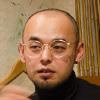 Kikunaga
KikunagaI don't have many opportunities to read poetry. Even though I write lyrics myself (laughs). Ah, I'm talking about lyrics.
Everyone : Ah (laughs)
*Kikunaga is the vocalist and lyricist for the band "The Crater." For more information, see " Nisoku Nowaraji ."
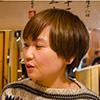 courtyard
courtyardIs the second poem about wanting to place your own nameplate on each of your personal spaces?
 Ohmura
OhmuraThat's right. Instead of having someone else call you, you call yourself.
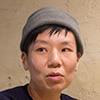 Wada
WadaI guess it's about expressing yourself, or showing who you are, rather than who other people say you are.
 Kikunaga
KikunagaBecause it's a poem that's very close to everyday life, it really brings images to mind.
 Ohmura
OhmuraThat's right! When I read "Shijimi" as an elementary school student, the image of the author looking at the shijimi and grinning came to my mind... I realized that eating shijimi is a secretly scary thing (laughs).
Heugeru = to fool around. A warlord of the Sengoku period, torn between desire for success and material desires.
"Hyougemono" (introduced by Masayuki Kamii)

Yoshihiro Yamada (author) "Hyougemono" Dowaya Kodansha (2005/12/22) ( Amazon )
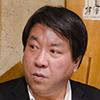 Kamii
KamiiI read the "Hyouge Mono" series that I had been meaning to read for a while. I ended up reading all the way through to the latest volume, volume 23, over the New Year holidays.
I started reading it after it was introduced on " This Manga is Amazing! " a few years ago, and according to Wikipedia it is "a historical manga that depicts the life of Furuta Oribe, a warlord who supported Oda Nobunaga and Toyotomi Hideyoshi during the Sengoku period."
The synopsis when it was published in a magazine introduced it as, "This is the story of Furuta Oribe, a warlord of the Sengoku period who struggles daily with the conflict and agony between his two desires: success and material things."Furuta Oribe was a disciple of Sen no Rikyu, and after Rikyu was ordered to commit seppuku, he took over as the head tea master of the Toyotomi clan. Along the timeline of the Warring States period, the tastes of the times change from formal beauty to "kabuku," "suki," "wabi-sabi," and other "hyo-geru" that Oribe liked. The interactions and conflicts with the warlords of the Warring States period are skillfully depicted.
Last year's historical drama "Sanadamaru" was really interesting, so I thought I'd read Shotaro Ikenami's "Sanada Taiheiki" in one go over the New Year holidays, but then I remembered that it had been piling up. By the way, the way the characters are portrayed in "Sanada Taiheiki" and the drama "Sanadamaru" are very different. There is a famous manga called "Sou Ten Kouro" based on the Romance of the Three Kingdoms, and it's interesting to see how the characters are portrayed differently when the perspective is different, even though it's the same story.
This New Year, I thought the images of the various warlords depicted in "Hyouge Mono" were interesting in their own way.
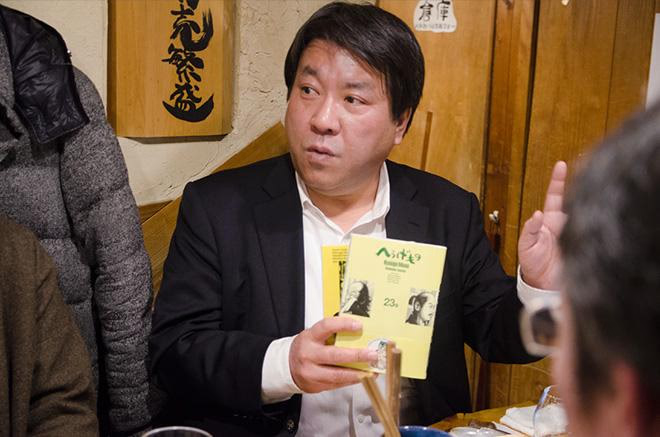
 courtyard
courtyardWhere is Furuta Oribe from?
 Kamii
KamiiHe sided with Oda Nobunaga, Toyotomi Hideyoshi, and later Ieyasu. In the Battle of Osaka, he was on the Tokugawa side.
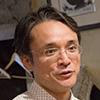 Murakami
MurakamiIt's Oribe from Oribe ware, right?
 Kamii
KamiiThat's right. It's a story about the time when I first began to truly enjoy art.
 Murakami
MurakamiThis was around the time when the Warring States period was beginning to calm down and people began to have more free time.
 Kamii
KamiiThe freedom to acquire or create things that bear no fruit and are merely admired for their beauty is something that cannot be achieved unless one becomes a feudal lord who rules a country. This is a story about someone who clings to his status as a feudal lord in order to obtain that freedom.
~Fourth Tamsui dish: Pork belly and Chinese cabbage hotpot~
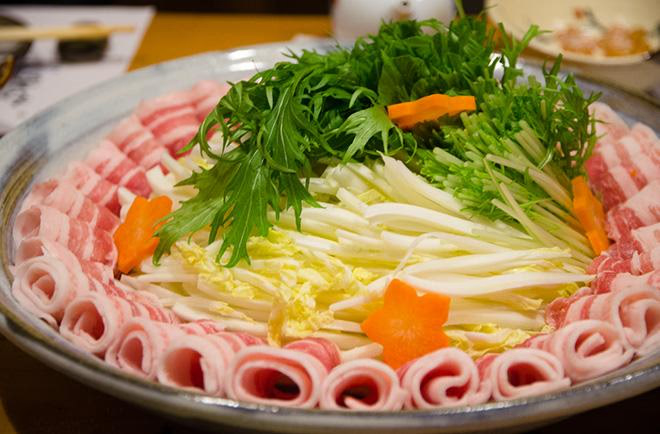
A hot pot of slightly pink broth with mentaiko and thinly sliced Chinese cabbage.
The monotonous repetition of everyday life and momentary destruction. Suzu-chan's everyday life, living softly and strongly.
"In This Corner of the World" (reviewed by Yoshiko Nakaniwa)
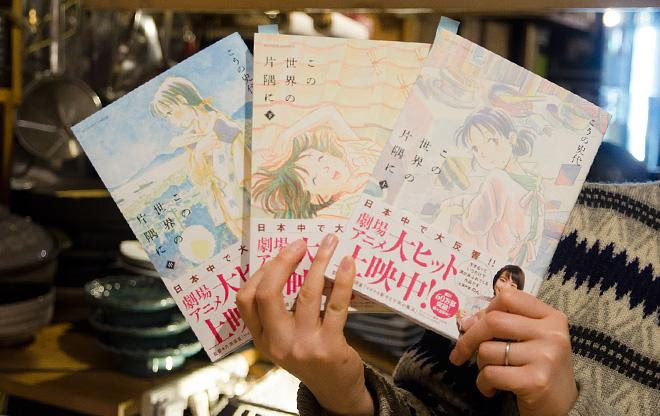
Fumiyo Kono (Author) "In This Corner of the World" Iwanami Shoten Futabasha (January 12, 2008) Amazon
 courtyard
courtyardI brought along a copy of "In This Corner of the World," which has been made into a movie and is currently a hot topic. I also saw it twice at the cinema at the end of last year.
The original is a manga by Fumiyo Kono, which I read in one go while traveling back to Ehime at the beginning of the year. That's why I brought it with me as a New Year's book (laughs).The story is set in Hiroshima over a period of 12 years, from 1934 to the end of the Pacific War. The story begins with the protagonist, Suzu-chan, a third or fourth grade elementary school student, going to deliver the seaweed she makes at home to a customer.
Even though she was still small, she had to carry a heavy package on her back to deliver it, and that's when she met her future husband, Shusaku.Later, when Suzu was 19 years old, Shusaku found her and said, "I want to marry that girl I met that time," and he married her off to a place called Kure.
Kure was a naval port with a military shipyard, and was an area of Hiroshima that was particularly subject to frequent air raids. As rations were reduced and the people became poorer, Suzu-chan went about her daily life happily cooking with the few ingredients she had, making monpe work pants, and doing laundry.
It is a story in which the accumulation of everyday occurrences actually brings to light the strangeness of war.What's interesting is that Suzu-chan is very good at drawing, and the world she sees is expressed so richly through her paintings.
For example, in a middle school sketching class, classmate Tetsu-kun sits on a hill overlooking the sea and refuses to go home without drawing a picture. His brother has just been killed in the war and he doesn't want to go home. So Suzu-chan draws for him, but in her field of vision, she sees the real Tetsu-kun as a character in the picture. It's really interesting to see how the world as seen by Suzu-chan is interpreted through her drawings.
Also, this might be a bit of a spoiler.
Suzu-chan and Harumi (my sister-in-law's daughter) were walking hand in hand near a time bomb that was dropped during an air raid, and they were blown away.
Harumi dies as a child, and Suzu-chan loses her right hand, but the flashback scene is depicted as an abstract inner world, and it's fantastical. The strange feeling of having your everyday life suddenly destroyed is conveyed powerfully through the picture.
Eventually, they gradually regain their normal lives, and it's amazing how resilient they are.Although it seems like a comedy manga with a heartwarming, laughing protagonist living an ordinary life, there are some darker moments here and there.
The balance is very interesting.
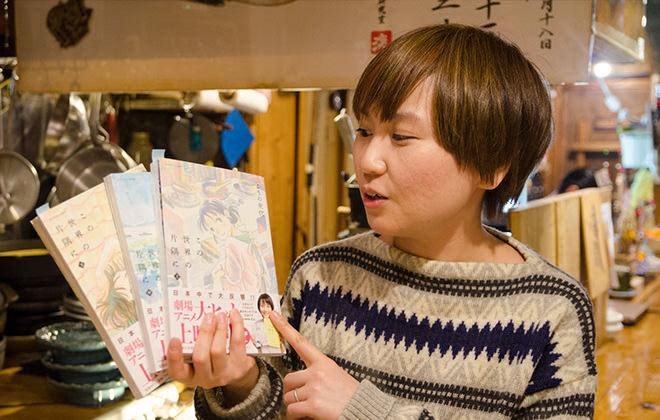
 Wada
WadaWere there any significant differences between the original and the movie?
 courtyard
courtyardI think it's pretty close. The affinity is so high that it feels like it was drawn especially for Director Katabuchi, who adapted it into a movie. But there are still some slight differences between the manga and the movie. For example, the relationship between Rin-san and Suzu-chan in the red-light district is almost completely omitted in the movie, and the house layout, maps, karuta cards, and other illustrations and diagrams are unique to the manga.
On the other hand, there are some expressions that can only be made with animation, especially the movement of people and the sense of weight. The colors come in, so you can feel like you're being blown away by the screen. Please watch the movie too. Then read the manga too (laughs).
 Kikunaga
KikunagaIt's completed in three parts. I'd definitely like to see it.
 courtyard
courtyardplease!
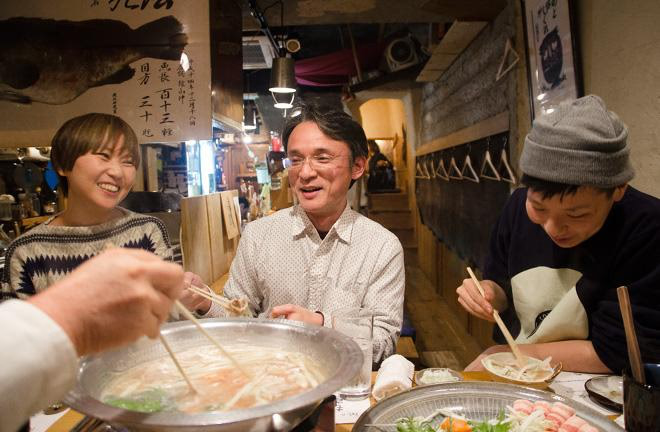
After the reading group
The reading group, which also served as a New Year's party, featured six participants giving presentations on books they had chosen on the theme of "Books they would like to read in the new year."
The books introduced included books about aspirations for the new year, poems that inspire the new year, books that could only be read during the New Year holidays when people have more time, and some popular manga that were read over the New Year holidays.
We all enjoyed talking about books and our goals for the year while eating hotpot, which created a slightly different atmosphere from a regular reading group and made for a fun time.
The theme for next month's reading group is "Books that have been piling up". See you next time!
